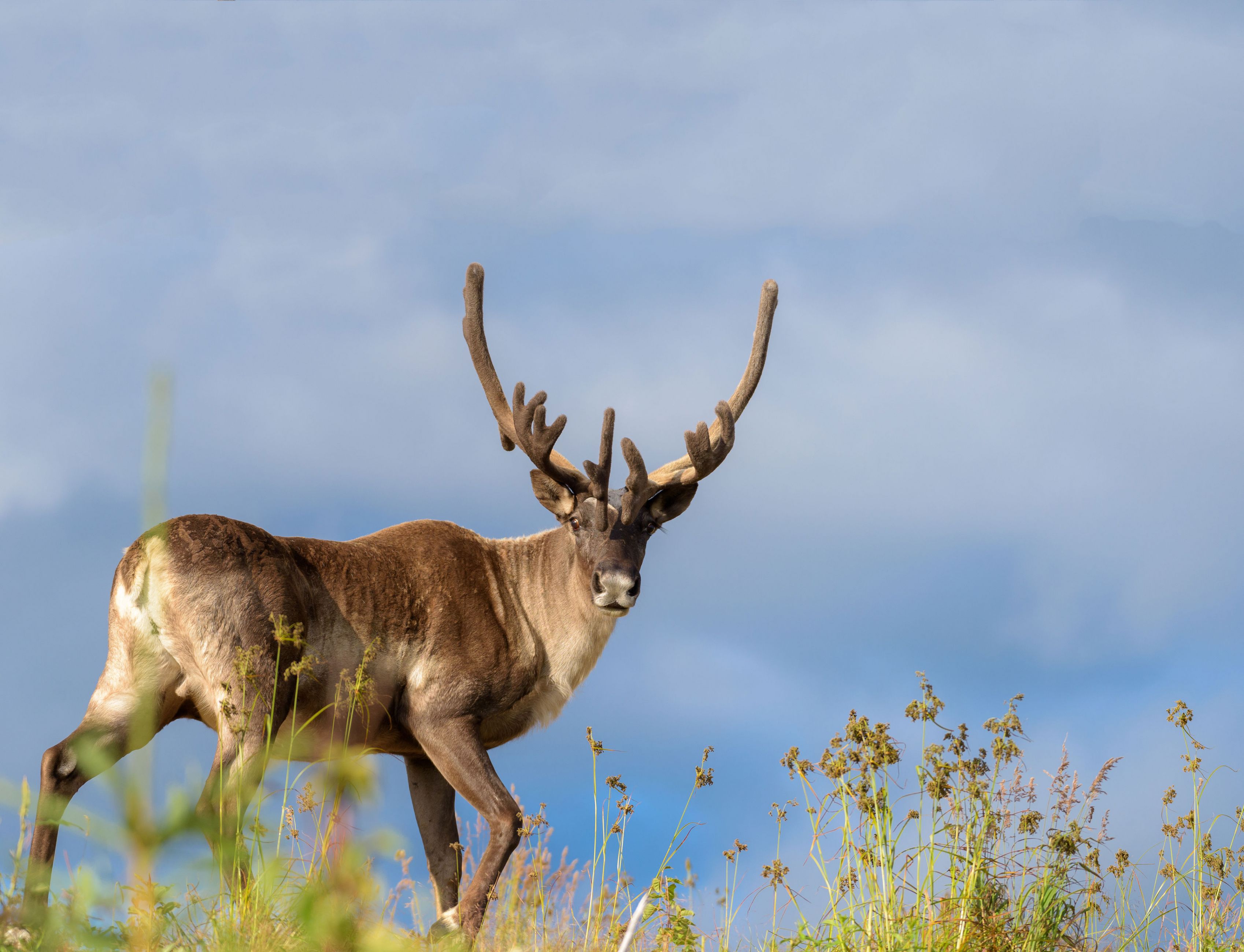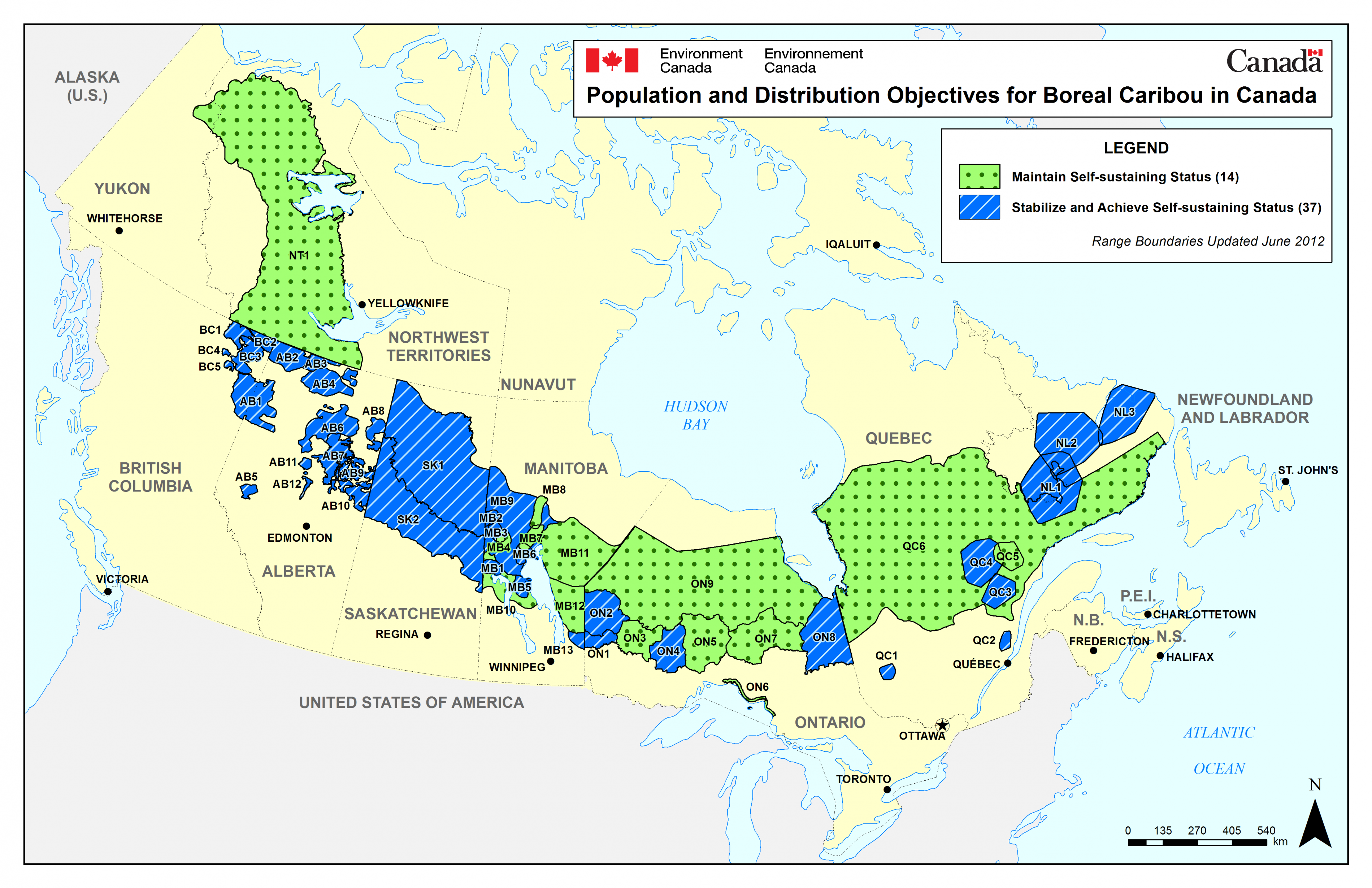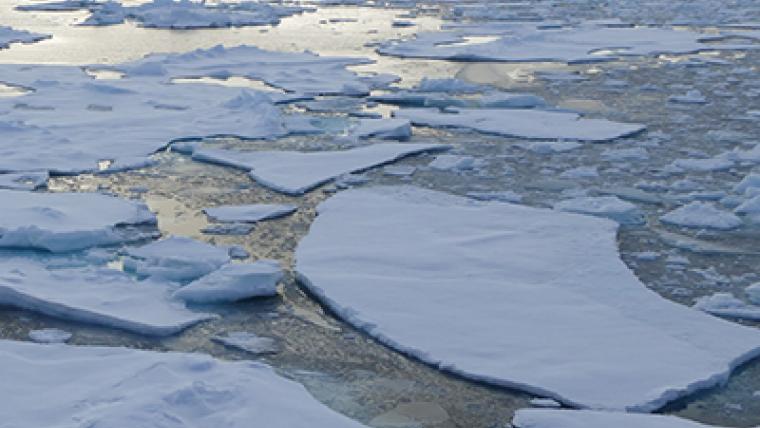Canada’s caribou at risk: mapping out solutions
January 17, 2019

Larger image
Denys Yemshanov, research scientist, Great Lakes Forestry Centre of Natural Resources Canada.
Canada’s boreal caribou are running a race against time. Their numbers have decreased by more than 30 percent over the past 20 years, and they are now officially listed as threatened under the federal Species at Risk Act.
Caribou face challenges on several fronts. Some of these are traditional: predators and competitors, human activities changing their habitat, forest fires modifying the ecosystem and outbreaks of forest insects and diseases. Others are entirely new threats, such as the various effects of climate change.
Taking action to restore habitat
Yet modern science can do much to help them. Natural Resources Canada (NRCan) scientists and researchers are taking action through their work at two specialized agencies: the Canadian Forest Service (CFS) and the Canada Centre for Mapping and Earth Observation.
Denys Yemshanov, a CFS research scientist at the Great Lakes Forestry Centre in Sault Ste. Marie, Ontario, is using powerful computer modelling programs to help find solutions.
He applies bio-economic modelling to determine the most cost-effective caribou habitat restoration strategies in boreal landscapes.
“It’s not just about ecological restoration or how much habitat there is; it’s about where and how those pieces connect,” he says. “There are limitless points of connection between suitable caribou sites in boreal landscapes. We’re looking for the optimal ways to make connections so restoration efforts can focus on those critical points where caribou can move and access the habitat.”
Mapping out a world in change
To create the most up-to-date and detailed picture of caribou habitat, Denys uses information from satellite images, maps and other sources to determine the limits of the caribou’s range, note where any disturbances occur and how the herds move.

Larger image
A caribou spotted in Quebec (photo Getty Images © Jérémie LeBlond-Fontaine).
He then factors in the element of human involvement by applying different economic calculations, or scenarios, that take into account human-made disturbances, restoration costs, commercial timber supply and forest harvesting.
Finally, he compares these different scenarios to determine the most cost-effective way to restore the caribou’s fragmented habitat.
Decisions made on the ground based on science
The process, although straightforward, is extremely complex because of the interplay of so many different variables, and it can take weeks for the computer program to process the information.
“It’s a challenge,” says Denys. “The forest landscape is a dynamic system, and everything happens in space and time. There’s one map of habitats today, and tomorrow there’s another map. So it’s like taking snapshots of a forest at multiple points of space and time and making economically informed decisions on the ground based on science.”
A growing field

Larger image
In Canada, 14 local caribou populations (green) are self-sustaining. Other populations (blue) must be stabilized in order to achieve the same status.
This innovative, specialized approach is of scientific interest as well as practical importance.
Denys has completed a case study in the Cold Lake Caribou Range in Alberta and is expanding the scope of his project to include caribou habitats in other parts of Canada. He’s also developing a long-term planning model that can incorporate forestry industry needs and the impacts of climate change. Forest harvest can increase landscape fragmentation and reduces the amount of suitable habitat available for caribou. These models may help understand how to minimize these impacts.
“From a scientist’s point of view, what makes it exciting is we’re helping solve actual policy problems,” he says. Eventually, decision makers and forestry planners could use his work to prioritize restoration and protection efforts.
A special relationship
Caribou are of special importance to the life and natural history of Canada’s North. They are also important to Canada as a whole and for thousands of years, caribou have been of special significance for Indigenous peoples. They are a national symbol that appears on Canada’s 25-cent coins. Conserving and restoring their habitat would benefit other species that thrive in the same ecosystem.
For these reasons, Canada’s scientists, provinces, the federal government, Indigenous peoples and industry are working together in various ways to protect and restore boreal caribou habitat, thus supporting local communities.
Page details
- Date modified:


